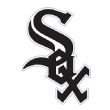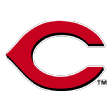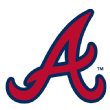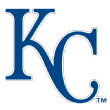A mini-autobiography: After several years as a full-on, gung-ho NBA writer and analyst, I was suddenly asked last July to pitch in to help with the endless furor for Chicago Cubs content. It wasn't a totally out-of-left-field proposition; I was a baseball guy before I was a basketball guy. After a period of reacclimation, I was lucky enough to help cover the sports story of a lifetime, all the way through the Cubs' unforgettable Game 7 World Series win on that rainy fall night in Cleveland.
Flash forward to now. I found that I did not want to abandon baseball writing again, and luckily it turned out my employers didn't want me to, either. So now I have returned to my roots, so to speak, and will be writing about the big leagues in 2017. That has meant a winter of fairly intensive study in an effort to get back to where I was before a few years ago. Things change quickly in the sports world, and it's amazing how little my 2012 baseball knowledge matters in a 2017 context.
We thought it might be fun to offer up a wide-lens overview of each team, one from what is ostensibly a fresh set of eyes. We'll do this in three pieces, 10 teams per piece, sorted into tiers according to my projected run differential for each team.
Today, we begin with the bottom tier. Teams are presented in inverse order, with the worst projections coming first. I'll refer to a team's current projection on occasion, but by and large we'll side-step the specific numbers attached to those forecasts. After all, the offseason isn't over yet.
 San Diego Padres: How bare should the big league cupboard get?
San Diego Padres: How bare should the big league cupboard get?
San Diego GM A.J. Preller hit the reset button, all but ensuring that the Padres' streak of six straight losing seasons will stretch for at least a few more years. There is a plan, though: Preller has stripped the roster bare and his payroll along with it, while going so heavy on prospects, especially international players, that San Diego added a second team for the next Arizona Fall League.
While the Padres wait for their deep but young group of prospects to mature, the big league roster will be used to mine for gold in the form of trade assets or upside players who might be part of a future core. That means lots of cheap, veteran reclamation projects such as former Cub Trevor Cahill. It also means wide-open opportunities for a wave of unproven guys from San Diego's system, such as outfielders Manuel Margot, Travis Jankowski and Hunter Renfroe.
The one splurge Preller made over the winter was signing an extension with 26-year-old first baseman Wil Myers, who forecasts as San Diego's top player by a good margin. Myers' six-year, $83 million deal should be a solid value if he continues the progress he made at the plate in 2016, when his 28 homers more than doubled his career total and he added 28 steals to boot. However, given that the Padres profile as baseball's worst team and it looks like it'll be a while before things turn around, you have to wonder how soon Myers becomes a prime trade candidate.
 Milwaukee Brewers: Plenty of flash, but rebuilding is not a dash.
Milwaukee Brewers: Plenty of flash, but rebuilding is not a dash.
The Brewers are in the midst of a rebuild, yet they appear to have some upside on their big league roster to go with a blossoming minor league system. Nevertheless, Milwaukee projects to finish with one of the worst records in baseball. The pitching staff explains a lot of this, with a not-too-inspiring rotation and a bullpen that has been thinned by trades sending away Francisco Rodriguez, Will Smith, Tyler Thornburg and Jeremy Jeffress in the past couple of years.
The more surprising part of the forecast: The offense doesn't project well, either. It feels like there are some interesting pieces, but not on paper -- I've got Milwaukee projected to finish 26th in runs, thanks to a drooping on-base percentage and the highest strikeout rate in the majors. However, they do look promising in areas such as isolated power (11th) and stolen bases (first). Players such as Jonathan Villar, Keon Broxton, Orlando Arcia and Eric Thames are slated for everyday roles, and they all have the potential to easily hit double digits in homers and steals.
That's great for fantasy baseball, but what about the real thing? All of these players do damage once they get on base or when they square the ball up. They just haven't done those things consistently enough in the past to warrant optimistic projections. Top prospect Lewis Brinson might also embody many of these traits if and when he arrives in Milwaukee this summer. So even though the Brewers have a lot of style among their position players, the question is whether they will muster enough substance to generate a decent offense. Either way, the Brewers shouldn't be boring.
 Chicago White Sox: Rebuild it and maybe they will come.
Chicago White Sox: Rebuild it and maybe they will come.
The folks in Chicago love their teams, but they aren't easily fooled. They know mediocrity when they see it, and as the White Sox lapsed into a rudderless era, their box-office fortunes reflected a fan base that had become apathetic. The Sox have ranked 12th or worse in American League attendance in each of the past three years. With the north side Cubs morphing into a budding dynasty, what is a flailing franchise to do? Rebuild, of course.
Entering the winter, it seemed clear the White Sox were in need of a reset, even though the farm system was so thin that a rebuild seemed like a long-term proposition. And perhaps that will prove to be the case. Certainly, no one expects the White Sox to contend for anything this year other than the AL Central cellar. But in moving Chris Sale and Adam Eaton, the Sox have gotten further down the rebuilding road than seemed possible.
With the bounty from the Sale deal and the similar haul from the somewhat stunning Eaton deal, the White Sox have life. There is work to do: The system is still shallow despite leaping to 10th in Keith Law's most recent rankings. Chicago still has solid veterans such as Todd Frazier, David Robertson, Jose Abreu and, especially, Jose Quintana to redeem in an effort to deepen that pool. What seemed like a moribund franchise suddenly has direction.
And you know what? I live not far from Sox Park, aka Guaranteed Rate Field, and even if no one can really tell you anything about the likes of Michael Kopech, Yoan Moncada or Lucas Giolito, people are intrigued. It might not pay off at the turnstiles right away. It probably won't pay off in wins, at least not this year. Still, GM Rick Hahn has made this a much more interesting team than it was when last season ended.
 Cincinnati Reds: Slowly turning the page.
Cincinnati Reds: Slowly turning the page.
Like many teams in this bottom tier, the Reds are well into a rebuilding process that might take a year or two to pay off. Yet one thing that differentiates Cincinnati from some of the other retooling teams is that there are several players from its last contending team still in place. Among those still around from Cincinnati's 90-win team in 2013:
- Franchise player Joey Votto has a full-on no-trade clause, so he's not going anywhere he doesn't want to go.
- Longtime 2B Brandon Phillips has a limited clause that has proved to be an obstacle to moving him.
- SS Zack Cozart remains the starting shortstop.
- After two injury-ravaged seasons, Devin Mesoraco is still the top catcher on the depth chart.
- Homer Bailey is owed $63 million for the last three seasons of his contract as he tries to complete his comeback from Tommy John surgery.
Is this a problem? If it isn't, that might change soon, at least in a couple of spots. It's certainly not the worst thing if Votto wants to stick around. He can anchor the roster through its transition, put up huge numbers and mentor the wave of kids to come.
The problem is the middle infield. Phillips is blocking prospect Dilson Herrera, a former Met who has a career .362 on-base percentage in the minors. Cozart is blocking Jose Peraza, who at least can be used in a super utility role. The Reds have a number of quality pitching prospects, some of whom might arrive in Cincinnati this year. It would be nice to gauge if some of these young players will be long-term answers.
 Colorado Rockies: Thin air, thin roster?
Colorado Rockies: Thin air, thin roster?
The Rockies' tepid forecast was one of the more surprising generated by my system in that, from a subjective standpoint, I feel like the Rockies are headed in the right direction. Colorado won 75 games last season, its most since 2010, and even pushed into minor wild-card contention in early August.
The young starting rotation, fronted by budding star Jon Gray, looks poised to become one of the better units the Rockies have had, and that's not to damn them with faint praise. Gray is terrific, and Tyler Anderson, Tyler Chatwood and Chad Bettis all could post ERAs hovering in the low 4s if Colorado plays strong defense. And that could happen -- GM Jeff Bridich has put together an athletic group of position players who should cover the expanses at Coors Field and offer some offensive versatility for when the Rockies head out on the road.
But I suspect the forecast is dogged by regression and a roster that appears a bit top-heavy. Ian Desmond might well repeat his Texas numbers in Colorado, but given the home park, that might not be enough to provide much of an upgrade to Mark Reynolds. D.J. LeMahieu won the NL batting title last year, but can he hit like Ted Williams at home once again? Is Trevor Story the real deal?
The Rockies have cornerstones in Gray and Nolan Arenado. They have a promising farm system. The question remains: Once you get past the guys at the top of the roster, is there enough to propel the Rockies to season-long contention?
 Atlanta Braves: Darkest before the dawn.
Atlanta Braves: Darkest before the dawn.
Last season, the Braves finished last for the first time since 1990, the season before Atlanta began a 15-year run of dominance. They spent this offseason acting like a team that thinks it's ready to repeat that history. The Braves clearly improved over the course of the 2016 season after a disastrous 9-28 beginning led to the dismissal of manager Fredi Gonzalez. On one hand, the Braves were two games over .500 after the All-Star break and won 12 of their last 14. On the other, they were outscored by 23 runs during the second half.
Atlanta GM John Coppolella was among the game's most frenetic executives during the winter. The game's top farm system is flush with pitching, but not much of it is ready to help immediately. So Coppolella went out and acquired two 40-something rotation pieces via free agency -- R.A. Dickey and Bartolo Colon -- and a younger, by comparison, veteran in former Cardinals lefty Jaime Garcia via trade.
The position players are populated by a mix of youth, such as middle-of-the-field pieces Dansby Swanson and Ender Inciarte, in-his-prime franchise cornerstone Freddie Freeman and veterans Matt Kemp and Nick Markakis. The hope is that there is enough pitching to keep the Braves competitive while the prospect horde matures. Atlanta is moving into an unfortunately located new stadium, and it would be a bummer to field another last-place club in the new environs.
The Braves' upside this season might be mediocrity, but if that happens, it'll be mediocrity with a bullet. One by one, Atlanta will replace the stopgap veterans, most of whom have been acquired from other organizations, with homegrown talent. It's a formula they used to execute better than anyone. It won't be long before we find out if the Braves' current brain trust still has the touch.
 Philadelphia Phillies: Win now, win later.
Philadelphia Phillies: Win now, win later.
The last vestige of the Phillies' World Series clubs was washed away after the season when the club declined its $25 million option on Ryan Howard. The big guy is gone, as are Jimmy Rollins, Chase Utley and the rest. Unlike some of the other rebuilding clubs on this tier, the Phillies are sneaking up fast on a return to contention. With a starting staff that appears solid, the Phillies spent the offseason bolstering their bullpen and lineup with veterans on short-term deals. The hope is that the Phillies can launch into contention, or flip guys such as Howie Kendrick, Joaquin Benoit or Pat Neshek.
After that, Philly will hopefully start to get big league production from their stable of near-ready prospects, including minor league power duo Dylan Cozens and, less likely, Rhys Hoskins. They combined for 78 homers at Double-A Reading last season. The Phillies' top prospect, SS J.P. Crawford, is overdue for a breakout and could arrive this season. With little in the way of long-term deals on the books and a team that looks to be both young and competitive, the Phils are poised to make a major splash in the next couple of years. That could be a blockbuster trade or a big-ticket, free-agent item.
Either way, it looks like Andy MacPhail's latest rebuilding effort won't be a prolonged one. And if you're looking for a sleeper wild-card contender for this season, you could do worse than picking the Phillies. Presently, Philadelphia projects to win 73 games by my system. That's with an offense that ranked 28th in the league, which would actually be a two-spot improvement over last year's rock-bottom attack. If some of these highly invented, short-term veterans -- Howie Kendrick, Michael Saunders, etc. -- pay off or a couple of the kids make a leap, the Phillies could start moving up the ladder very quickly. If that happens, they have all the resources they could want to bolster a playoff run.
 Arizona Diamondbacks: A course correction.
Arizona Diamondbacks: A course correction.
Let's start with the elephant inexplicably wandering around in the desert: The Diamondbacks lost 93 games last season and this winter were ranked dead last in Keith Law's organizational rankings. That is not a good combination. It gets worse: Last year's blockbuster free agent, Zack Greinke, struggled to a 4.37 ERA and is due to make $33.6 million this season on a team likely to sport a payroll under $100 million. Fellow starter Shelby Miller got out of whack and was one of the worst starters in the game last season, his first after being acquired from Atlanta for, among others, touted prospect Dansby Swanson.
Luckily, the artist behind that ugly portrait, former GM Dave Stewart, has moved on. His replacement, Mike Hazen, moved infielder Jean Segura to Seattle for a starter, Taijuan Walker, who adds upside to the big league rotation. After that, it was mostly a winter of mining for make-good players who, if they pan out, might be flipped for much-needed youth. Fernando Rodney was signed to anchor the back end of the bullpen.
The Diamondbacks have an unseen ally on their side, though it's not a sexy one: regression. The off-years from Greinke and Miller stand out, and center fielder A.J. Pollock missed nearly the entire season. The rotation could be solid if the underachievers bounce back, Robbie Ray continues to miss bats and Patrick Corbin and/or Archie Bradley, along with Walker, manage to take a step forward. To that end, Hazen jumped on the pitch-framing bandwagon by adding veteran backstops Jeff Mathis and Chris Iannetta.
While it's not out of the question that Arizona bounces back toward the middle, there are a lot of things that would have to go right. Meanwhile, Greinke and Miller will still be around to remind Hazen that, this time, there can be no shortcuts.
 Minnesota Twins: Growth from within.
Minnesota Twins: Growth from within.
The Twins were awful last season. Worse than they've ever been. Their 103 losses were more than they had lost in any season since they moved to Minnesota after the 1960 season. In fact, it was a season so bad, it was worthy of the worst seasons suffered by Senators fans when the franchise toiled in the nation's capital. This winter, Minnesota's marquee transaction was signing catcher Jason Castro. Not. Too. Inspiring.
But here's the thing: I think the Twins will be a lot better this season. That's not to say I think they'll be good, but after all, this club won 83 games the season before last, and no one really saw the train wreck of 2016 coming down the track.
This is more than a plexiglass forecast, where I'm simply suggesting a bunch of guys who had off seasons will return to form. There are some seriously interesting bats in the Twins lineup: young guys who, if they blossom as a group, could anchor a pretty dangerous lineup. It's a group promising enough that any wish-casting about Joe Mauer returning to MVP form isn't even part of the equation.
The most impressive of these bats, at least for 2017, is Miguel Sano, who is slated to take over third base full time. Along with Byron Buxton, who finished last season strong, and Max Kepler, the Twins have a core of take-and-rake young sluggers who are athletic enough to add some value beyond their power bats. In a way, they are budding to become what Brian Dozier already is.
Of course, this optimistic offensive outlook for Minnesota is undermined by a poor pitching outlook. The Twins are still paying for a bizarre organizational aversion to strikeout pitchers, and they project to finish last in K-rate this season. The Twins don't really have a staff anchor, nor do they have a defense likely to prop up a ball-in-play staff. That, as much as anything, is why Dozier's name isn't likely to drop out of the trade rumor mill any time soon.
 Kansas City Royals: Is that window ajar?
Kansas City Royals: Is that window ajar?
Dayton Moore's methodical building plan paid off more handsomely than any blue-clad Royals fan could have hoped. Two straight pennants and the franchise's second World Series title in 2015. Last season, Kansas City suffered through injuries and regression, dropping all the way to .500 and throwing their long-term outlook into question.
That outlook was made even more murky by the stunning death of starting pitcher Yordano Ventura. It still feels too soon to discuss the baseball ramifications of Ventura's passing, but I suppose it has to be done. Even before that happened, I felt like Dayton Moore faced the most difficult offseason of any GM in baseball. You can see that in the way this piece has been written. For each of the franchises discussed above, not only does the direction each team needs to go seem clear, but all of them already seem headed down the right path. With the Royals ... I don't know what the right answer is.
The fact of the matter is that the Royals finished break-even last season. Their inclusion with the other teams in this tier reflects the fact that they don't have a strong projection for next season, either. But, then again, the Royals never projected well even while hanging fresh flags over Kauffman Stadium.
But the elite defense that marked the Royals before last season wasn't there, and I'm not sure that comes back to a group another year older. The defense was good, but it wasn't game-changing, and for a Royals staff that isn't a swing-and-miss group, that's a problem, one that was made worse by Ventura's absence.
Maybe Mike Moustakas comes back from injury and puts up an All-Star season. Maybe Eric Hosmer goes off in his contract year. Maybe Jorge Soler blossoms now that he's going to get everyday at-bats. But the Royals are besieged with expiring contracts, and they aren't going to have the money to pay the likes of Homer or Lorenzo Cain. It feels like the Royals have to get off to a great start, or Moore's question about what direction to head will be answered for him.
